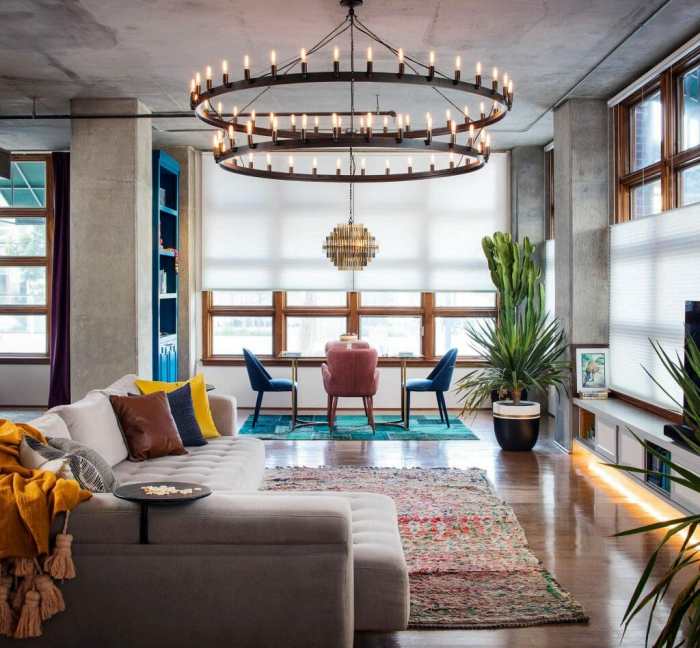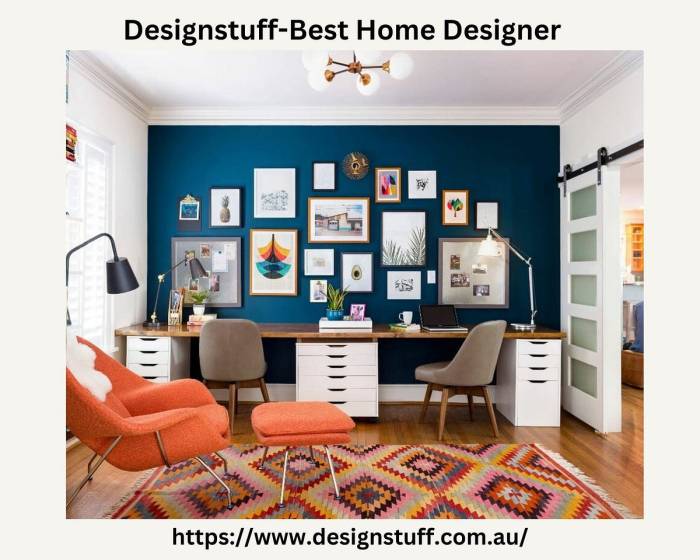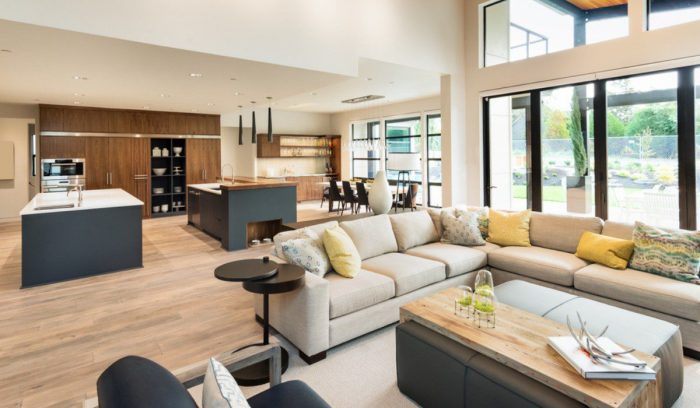Elevating Spaces: The Impact of Designer Decor
Embark on a journey through the world of designer decor, where style meets functionality and personal expression. Discover how the right decor elements can transform any space into a work of art.
Explore the key elements, tips for incorporation, and even DIY projects to unleash your creativity and enhance your living experience.
Importance of Designer Decor
Designer decor plays a crucial role in shaping the overall aesthetic of a space, whether it's a home, office, or any other environment. It goes beyond mere decoration, as it has the power to transform a room into a stylish and inviting sanctuary.
Elevating Style and Ambiance
Designer decor has the ability to elevate the style and ambiance of a room to a whole new level. By carefully selecting pieces that harmonize with each other and the space, designers can create a cohesive and visually appealing environment that exudes sophistication and elegance.
Reflecting Personal Style
One of the key benefits of designer decor is that it allows individuals to showcase their personal style and preferences through their living spaces. Whether it's through bold colors, unique patterns, or specific design elements, designer decor helps to create a space that truly reflects who you are.
Popular Designer Decor Trends
- Minimalism: Clean lines, neutral colors, and simple yet sophisticated furnishings characterize this popular design trend, creating a sense of calm and tranquility in a space.
- Eclectic Mix: Mixing different styles, textures, and patterns to create a visually stimulating and dynamic space that is full of personality and character.
- Natural Elements: Incorporating natural materials such as wood, stone, and plants to bring a sense of warmth and connection to nature into the space.
Elements of Designer Decor
Designer decor is characterized by several key elements that work together to create a cohesive and visually appealing space. These elements include the choice of materials, color schemes, and furniture selection.
Materials in Designer Decor
In designer decor, materials play a crucial role in defining the overall aesthetic of a space. Commonly used materials include luxurious fabrics like silk, velvet, and linen for upholstery, as well as high-quality woods such as oak, mahogany, and walnut for furniture pieces.
Other materials like glass, metal, and marble are also frequently incorporated to add a touch of sophistication and elegance to the decor.
Color Schemes in Designer Decor
Color schemes are a fundamental aspect of designer decor, as they set the tone and mood of a space. Designers carefully select colors that complement each other and create a harmonious balance within the room. Neutral tones like white, beige, and grey are often used as a base, with pops of bold colors or metallic accents added for visual interest.
The right color scheme can enhance the overall aesthetic of the space and create a sense of cohesiveness.
Furniture Selection in Designer Decor
The choice of furniture is crucial in achieving designer decor. Designers opt for pieces that are not only stylish but also functional and well-crafted. Furniture with clean lines, interesting shapes, and high-quality finishes are preferred to elevate the look of the space.
Mixing different styles and textures can also add depth and visual appeal to the overall design. The right furniture selection can tie the room together and create a sophisticated and polished look.
Incorporating Designer Decor

When it comes to incorporating designer decor into different rooms, there are a few key tips to keep in mind. One important aspect is finding a balance between designer pieces and functionality to create a cohesive and stylish space. Mixing and matching designer decor items effectively can elevate the overall look of a room, while paying attention to lighting is crucial for enhancing the beauty of these pieces.
Tips for Incorporating Designer Decor
- Start by choosing a focal point in each room where you can showcase your designer decor, such as a statement piece of furniture or a piece of art.
- Consider the overall color scheme of the room and select designer pieces that complement the existing palette to create a harmonious look.
- Mix different textures and materials to add depth and visual interest to the space, combining elements like wood, metal, and fabrics.
- Layer lighting sources, including ambient, task, and accent lighting, to highlight your designer decor and create a warm and inviting atmosphere.
Balancing Designer Decor and Functionality
It's essential to strike a balance between designer decor and functionality in a space. While designer pieces can add a touch of luxury and style, it's important to ensure that they serve a practical purpose as well. For example, choosing a designer sofa that is not only visually appealing but also comfortable and durable can enhance both the aesthetic and functionality of a living room.
Mixing and Matching Designer Decor Items
- Pair a modern designer coffee table with a vintage rug to create a unique and eclectic look that blends different styles seamlessly.
- Combine bold and colorful designer accessories with neutral furniture to make a statement without overwhelming the space.
- Use designer lighting fixtures as focal points in a room, such as a chandelier or a sculptural floor lamp, to add a touch of elegance and sophistication.
Significance of Lighting in Enhancing Designer Decor
Lighting plays a crucial role in enhancing designer decor by highlighting key pieces, creating ambiance, and setting the mood in a room. Whether through natural light, overhead fixtures, or accent lighting, the right lighting can elevate the beauty of designer items and bring out their full potential.
DIY Designer Decor

Creating designer decor through DIY projects is a fun and cost-effective way to personalize your living space. Not only does it allow you to unleash your creativity, but it also adds a unique touch to your home that reflects your personal style.
Benefits of DIY Designer Decor
- Cost-effective: DIY projects are usually more budget-friendly than purchasing designer decor items.
- Personalization: DIY projects allow you to customize your decor to suit your taste and preferences.
- Creative outlet: Engaging in DIY projects can be a therapeutic and fulfilling creative outlet.
- Unique pieces: DIY designer decor pieces are one-of-a-kind and can't be found in stores.
Step-by-Step Guide for DIY Designer Decor Piece
- Choose a design or concept for your decor piece.
- Gather the necessary materials and tools for the project.
- Follow a step-by-step tutorial or create your own process for assembling the decor piece.
- Add personal touches or embellishments to make the piece uniquely yours.
- Display your DIY designer decor proudly in your home.
Resources for Sourcing Materials for DIY Designer Decor Projects
- Local craft stores: Visit your nearest craft store to find a variety of materials for your DIY projects.
- Online marketplaces: Websites like Etsy, Amazon, and eBay offer a wide selection of materials for DIY projects.
- Thrift stores: Explore thrift stores for unique and affordable items that can be repurposed into designer decor pieces.
- Nature: Incorporate natural elements like branches, stones, or flowers into your DIY projects for a touch of organic beauty.
Wrap-Up

As we conclude our exploration of designer decor, remember that every piece tells a story and adds character to your surroundings. Let your unique style shine through in every design decision you make.
FAQ Resource
What role does color schemes play in designer decor?
Color schemes are crucial in creating a cohesive look in designer decor. They can set the mood, enhance the style, and tie the elements of a room together.
How can I effectively mix and match designer decor items?
Focus on balancing colors, textures, and styles. Mix contrasting elements for visual interest while ensuring they complement each other in the overall design.
Why is lighting important in enhancing designer decor?
Lighting can highlight key design elements, create ambiance, and set the tone for a space. It plays a crucial role in showcasing designer decor pieces effectively.